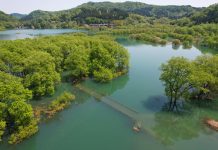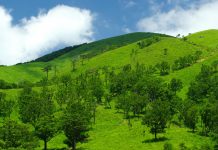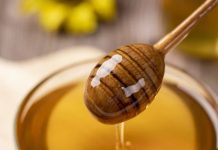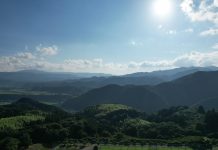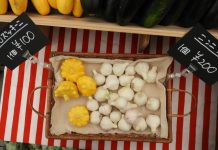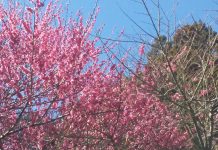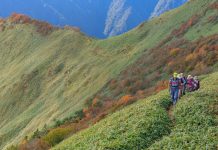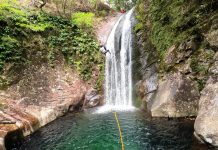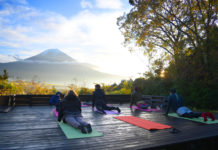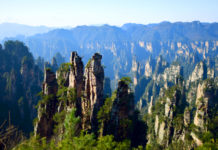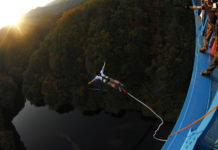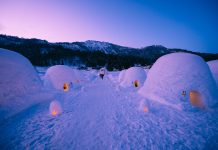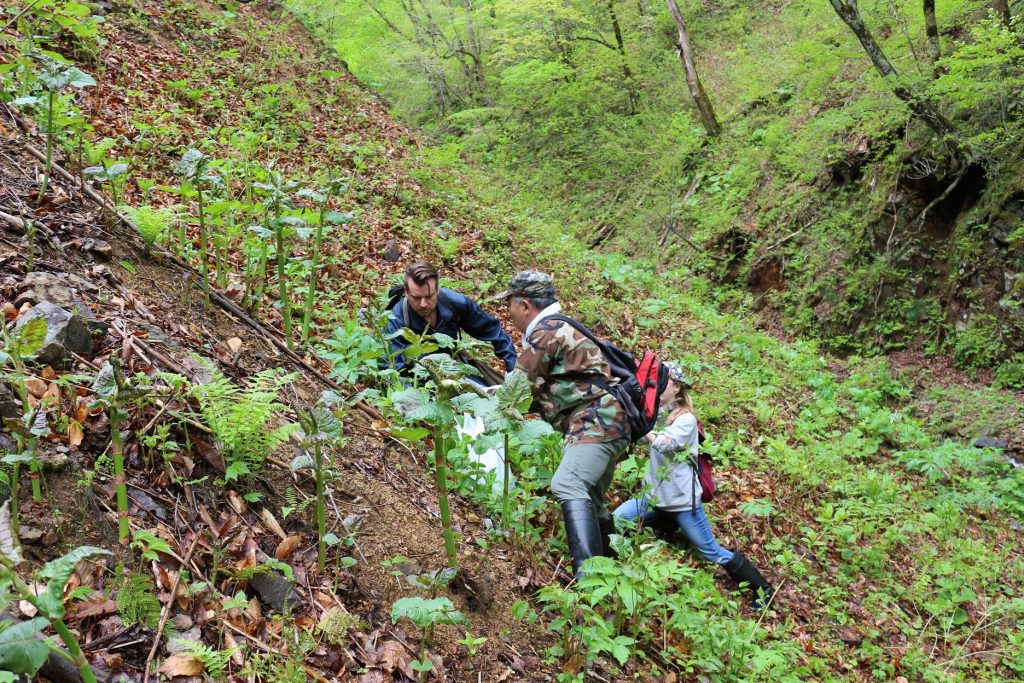
In north Japan, the snow usually starts to melt in the towns and lowlands in March, yet lingers up in the mountains as late as June. The wet, slippery spring snow makes many mountain trails treacherous and it is for this reason the official beginning of hiking season—and “Opening Day”—for most mountains is July 1. Nevertheless, this late spring period is one of the most popular times for many older Japanese to venture into the lower areas of mountains that surround most towns in this region. These tough old folks aren’t hiking though—they’re foraging for sansai!
Foraging for wild greens, known as sansai (山菜), has been part of Japanese culture and tradition since modern humans first began inhabiting the archipelago. During the Paleolithic Era, people all over the world were foragers, but in Japan foraging culture continued to develop and be passed down through the generations, remaining largely intact even in this postmodern era. Every spring, tens of thousands of people put on long rubber boots and walk up narrow mountain streams picking dozens of varieties of wild greens.
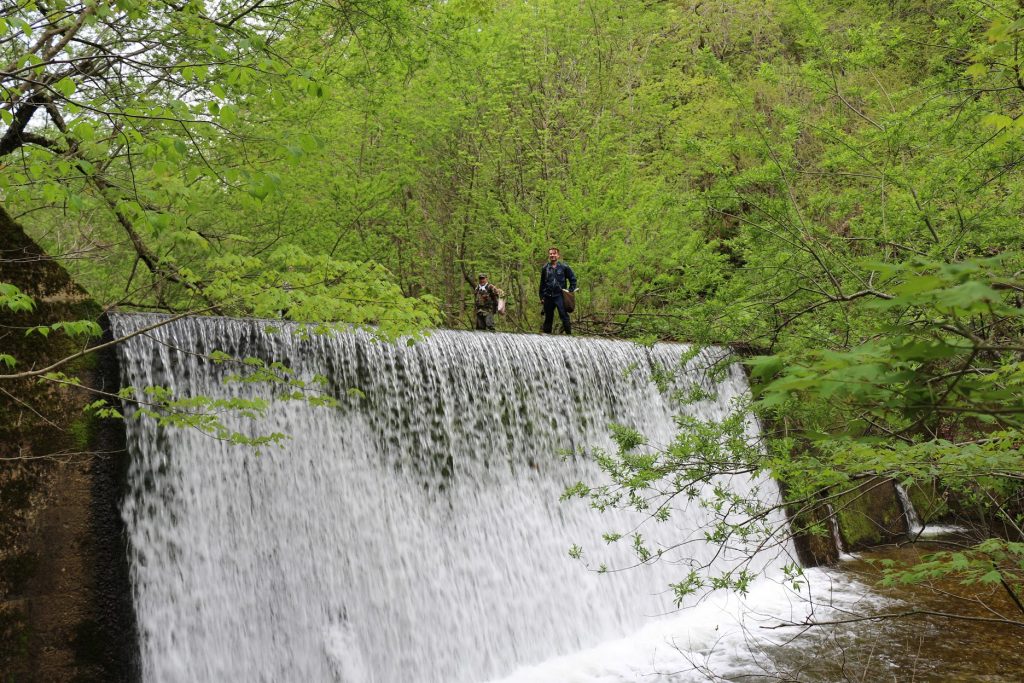
I was introduced to foraging back in 2011 in the mountains of Iwate in a small hot-spring town called Hanamaki. In fact I met a local man, Haruo, outside a hot spring ryokan carrying a basket of wild greens and asked him about them. He kindly offered to show me where I could find them in the mountains and how to cook them. I’ve been going foraging with him every spring (and fall) since.
Giant butterbur or fuki (フキ), are one of the first signs of spring. Right after the snow melts, these little green heads start poking up out of the ground everywhere. These bake (pronounced “bah-kay”), as they’re called locally when young, are prepared as tempura or mashed up and mixed with miso to form a paste that is often eaten with rice. Later in June, when fully mature, these fuki grow into a thick-stemmed broad-leafed plant that looks like rhubarb.
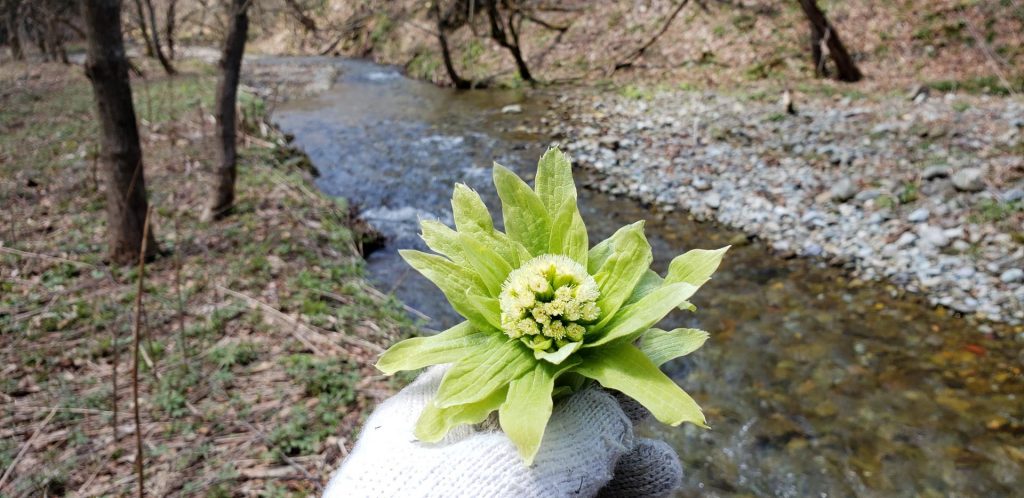
In this latter stage, the stems become fragrant and very tasty. They are boiled or salt-pickled and served throughout the year at ryokan and traditional restaurants. Fuki have been treasured by people in Japan for thousands of years. The indigenous Ainu people of Hokkaido even have a legend about a goddess who was punished for destroying a human village by being transformed into fuki to benefit the people and atone for her crimes.
Fiddleheads, or kogomi (コゴミ), are not as easy to gather. Every spring we go deep into the Ou Mountains to the northwest of Hanamaki, wading across streams to find them. These tightly wound fronds of ostrich ferns explode up from the ground in moist soil near mountain streams and are one of the most sought after delicacies in early spring. They often hide under piles of dead leaves and can be difficult to spot. And, if you’re inexperienced, they’re rather confusing to identify.
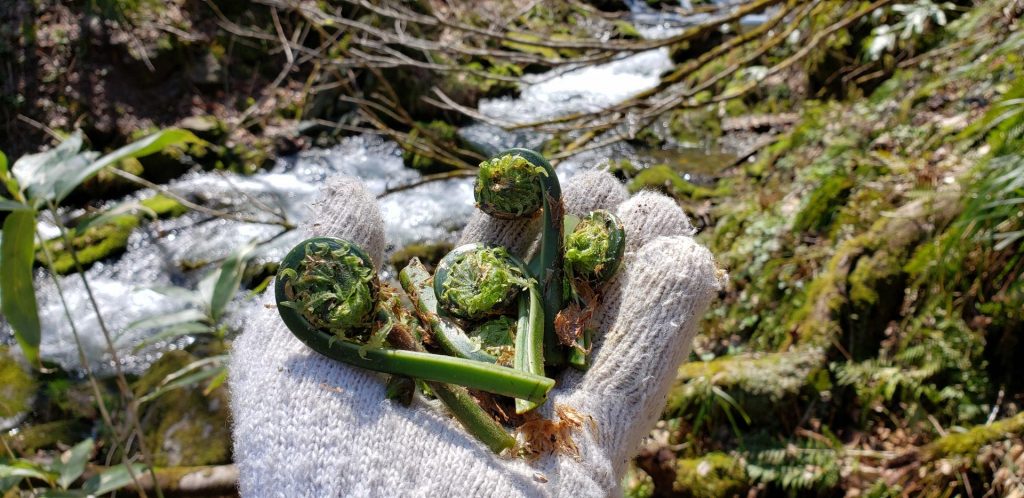
The mountains are filled with ferns, but only a few varieties are edible. When I take visitors foraging with us, they inevitably keep asking, “Is this right? What about these?” But usually after an hour or so of trial and error they get the hang of identifying the
Picking them isn’t without danger, however. Often growing right nearby are clumps of torikabuto, known as monkshood in English. If you accidentally grab just a few leaves or part of the torikabuto stem and mix it in with your haul, it will be the end of you! Torikabuto is responsible for a number of accidental deaths in Japan every couple years and has even been used in a few murders! The Ainu were familiar with this lethal plant and ground up the roots—where most of the poison is concentrated—making a paste they poisoned their arrows with. Torikabuto has a beautiful purple flower in August, but during the spring foraging season it is more difficult to identify and can be mistaken for an edible plant. That’s one reason why you should only forage with a guide or seasoned veteran.
After the ferns have all opened and the fiddlehead season ends, the next wave is actually my favorite—the twin tara-no-me and koshiabura. These gifts from heaven don’t have any correlates in the West, and thus lack English names. (Their Latin names are long, and instantly forgotten.) Both are bundles of new leaves growing from trees that initially are tightly clumped together as they sprout. These trees grow quickly and can be found in a lot of forests that have been logged in recent decades, giving fast-growing young trees a chance to spread. You have seen them along the edge of ski slopes for the same reason.
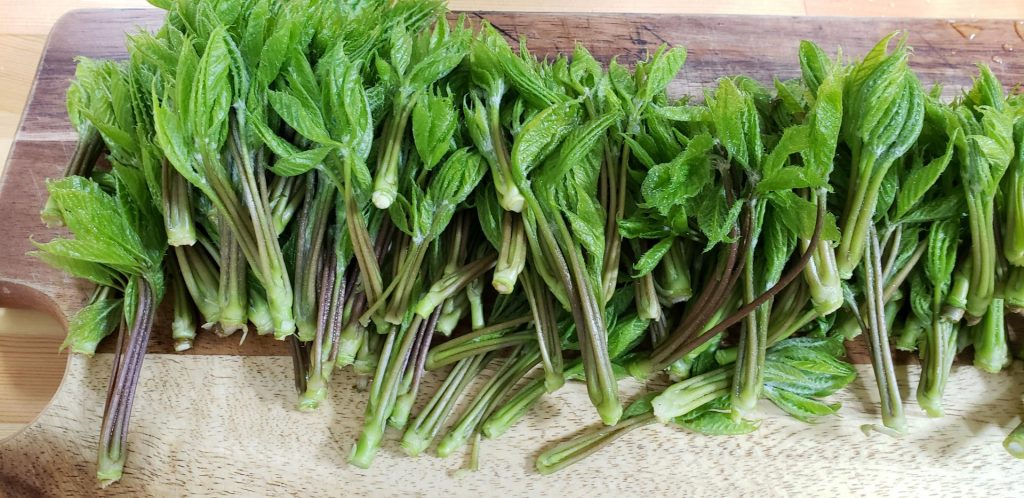
Tara-no-me are among the most widely recognized and eaten mountain vegetables, and are almost always made into tempura. It has a subtle bitterness and great texture. Koshiabura, my personal favorite, is also mostly enjoyed as tempura but can be paired with salted meat as well. The leaves have a fragrant aroma and unmistakable flavor, also slightly bitter, that is immediately addictive. If you’re in Japan during April or May, you’ll likely be able to find them in local izakaya and restaurants as seasonal tempura
Foraging in Japan can be somewhat dangerous, even beyond the risk of accidentally poisoning yourself. Most bear attacks in Japan happen not to hikers, but rather foragers. In the spring, when most people are out foraging, bears are also stumbling out of hibernation, often with cubs that haven’t yet learned to avoid humans. People foraging for nemagari-take (bamboo grass shoots) are particularly at risk. Bears love to eat these tasty snacks as well, and rummaging through thick bamboo grass with no visibility has on countless occasions resulted in a forager literally bumping right into a bear and being punished for it.

As more and more people move out of the countryside into the cities, fewer young people are continuing the tradition. Recently, various places in Japan have begun offering foraging tours to allow visitors a chance to both go out into the bush with guides and then take part in the preparation of a meal with the gathered greens, particularly in Yamagata, Akita and Iwate. As with many aspects of rural culture, tourism may be able to serve some small role in helping to spark interest in continuing ancient traditions. Most Japanese people my age that I speak with about foraging just say that their parents do it. Hopefully their children will too.

